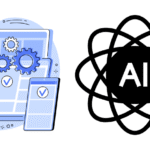What cross-platform development skills are most in demand? Stay ahead of the curve with these cutting-edge skills.

Cross-platform development has been a game-changer in the software world, enabling developers to build applications that run seamlessly across multiple platforms like a hot knife through butter.
But what cross-platform development skills are most in demand?
We’ll dive deep into the must-have skills to stay ahead in this competitive market. So, buckle up and let’s get cracking!
1. What Cross-Platform Development Skills Are Most in Demand?
1.1. Fluency in Multiple Programming Languages
To be the bee’s knees in cross-platform development, you’ve gotta be a jack of all trades when it comes to programming languages. The top languages to have under your belt include:
- JavaScript
- Python
- C#
- Swift
- Kotlin
1.2. Proficiency in Popular Frameworks
Frameworks are the bread and butter of cross-platform development. Mastering these popular frameworks will give you a leg up:
- React Native
- Flutter
- Xamarin
- Ionic
- Cordova
1.3. Familiarity with Integrated Development Environments (IDEs)
Knowing your way around popular IDEs is crucial for cross-platform developers. Get cozy with:
- Visual Studio
- Android Studio
- Xcode
- IntelliJ IDEA
- VSCode
1.4. A Knack for UI/UX Design
A great user experience is what separates a good app from a great one. Understanding the principles of UI/UX design is essential to create apps that’ll knock people’s socks off.
1.5. Version Control Skills
When it comes to collaboration and tracking changes in your code, version control systems like Git are a godsend. So, git gud at Git!
2. FAQs on Cross-Platform Development Skills
2.1. Why is cross-platform development so popular?
Cross-platform development allows you to write code once and run it on multiple platforms, saving time, money, and effort. It’s like killing two birds with one stone!
2.2. Which framework should I choose for cross-platform development?
It’s a matter of personal preference and the project’s requirements. Each framework has its pros and cons, so weigh them carefully before choosing.
2.3. Are native apps better than cross-platform apps?
Native apps can provide better performance and access to platform-specific features. However, cross-platform apps offer faster development and lower costs, making them a compelling choice for many businesses.
2.4. How do I decide which programming language to learn first?
Consider the languages that are most commonly used in the frameworks you’re interested in. JavaScript, for instance, is widely used in React Native and Ionic.
2.5. What resources can help me learn cross-platform development skills?
Online tutorials, courses, books, and blogs can be invaluable resources. Don’t forget to join developer communities and attend workshops or meetups to network and learn from others!
2.6. How long does it take to master cross-platform development skills?
There’s no one-size-fits-all answer. It depends on your background, dedication, and learning style. Practice makes perfect, so keep honing your skills!
3. Insights from Cross-Platform Development Experts
To gain further insights into the field of cross-platform development, we interviewed experts with at senior levels or above. Here are some nuggets of wisdom from the experts:
3.1. Focus on User-Centered Design
According to our experts, a user-centered approach is essential for creating cross-platform apps that meet user needs and preferences. Understand your users’ goals, motivations, and pain points to create an app that they’ll love.
3.2. Choose the Right Framework for the Job
Selecting the right framework for your project is crucial for success. Consider the project’s requirements, target platforms, and team expertise to determine the most suitable framework.
3.3. Invest in Testing and Quality Assurance
Testing and quality assurance are critical for delivering high-quality cross-platform apps. Our experts recommend investing in automated testing, continuous integration, and quality assurance tools to streamline the testing process.
3.4. Embrace Cloud Technologies
Cloud technologies offer numerous benefits for cross-platform development, including scalability, cost savings, and collaboration. Our experts recommend leveraging cloud platforms and services to maximize efficiency and productivity.
3.5. Stay Abreast of Emerging Technologies
The tech industry is constantly evolving, and cross-platform developers must stay updated on emerging technologies and trends. Our experts suggest attending conferences, networking with peers, and keeping an eye on emerging technologies to stay ahead of the curve.

4. Tips for Success in Cross-Platform Development
4.1. Stay Updated on Industry Trends
The tech industry is ever-changing, and it’s vital to keep your finger on the pulse. Subscribe to newsletters, follow industry influencers, and attend conferences to stay in the know.
4.2. Build a Diverse Portfolio
Showcase your skills and expertise by creating a diverse portfolio of cross-platform projects. Include different types of apps, frameworks, and languages to demonstrate your versatility.
4.3. Develop Soft Skills
Technical prowess isn’t everything. Good communication, teamwork, problem-solving, and adaptability are essential for thriving in the fast-paced world of cross-platform development.
4.4. Embrace Continuous Learning
Never stop learning. As a developer, it’s crucial to be open to new ideas and technologies, as well as continuously honing your existing skills.
4.5. Seek Feedback and Collaborate
Collaborating with other developers and seeking feedback on your work can help you grow and improve as a cross-platform developer. Don’t shy away from constructive criticism – embrace it!
5. Best Practices for Cross-Platform Development
To ensure the success of your cross-platform projects, follow these best practices:
5.1. Focus on Performance Optimization
Optimizing your app’s performance is crucial to offer a smooth user experience. Use tools like profiling and debugging to identify bottlenecks and implement strategies to improve performance.
5.2. Emphasize on Accessibility
Make your app accessible to all users, regardless of their abilities. Incorporate features like screen readers, adjustable font sizes, and alternative navigation options.
5.3. Plan for Scalability
Design your app with future growth in mind. Adopt modular architecture and follow coding best practices to ensure your app can scale up as needed.
5.4. Test on Multiple Devices and Platforms
Thoroughly test your app on various devices and platforms to identify and fix compatibility issues, ensuring a seamless experience for all users.
5.5. Prioritize Security
Implement robust security measures to protect user data and prevent unauthorized access. Stay updated on emerging security threats and best practices to keep your app secure.
6. Top Cross-Platform Development Tools
To streamline the cross-platform development process, utilize these powerful tools:
6.1. Code Editors
- Sublime Text
- Atom
- Brackets
6.2. Debugging and Profiling Tools
- Chrome DevTools
- Safari Web Inspector
- React Developer Tools
6.3. Design and Prototyping Tools
- Sketch
- Adobe XD
- Figma
6.4. Project Management and Collaboration Tools
- Trello
- Asana
- Slack
6.5. Continuous Integration and Deployment Tools
- Jenkins
- Travis CI
- CircleCI
Conclusion
Cross-platform development is an exciting and dynamic field, with endless opportunities for growth and innovation. By mastering the must-have skills, following best practices, utilizing the right tools, and learning from experts, you’ll be well on your way to becoming a cross-platform development pro.
Remember, the journey to becoming a cross-platform development expert is a marathon, not a sprint, but with dedication and perseverance, you’ll reach the finish line in no time.
William is a highly accomplished technical author specializing in cross-platform app development. With a rich background in the tech industry, he has worked at prestigious companies like Uber and Facebook, where he honed his skills as an iOS developer since 2009. Throughout his career, William has been an advocate for leveraging frameworks like React Native and Xamarin to create innovative and efficient cross-platform mobile apps.
Having pursued a degree in Computer Science and Mathematics at Caltech, William is equipped with a strong educational foundation. Currently residing in LA with his two daughters, he finds solace in exploring the scenic hills through hiking. Passionate about knowledge sharing, William not only builds cutting-edge applications but also takes pleasure in teaching students how to develop their own cross-platform mobile apps. His expertise, combined with his dedication to empowering others, makes him an invaluable asset in the field of app development.






